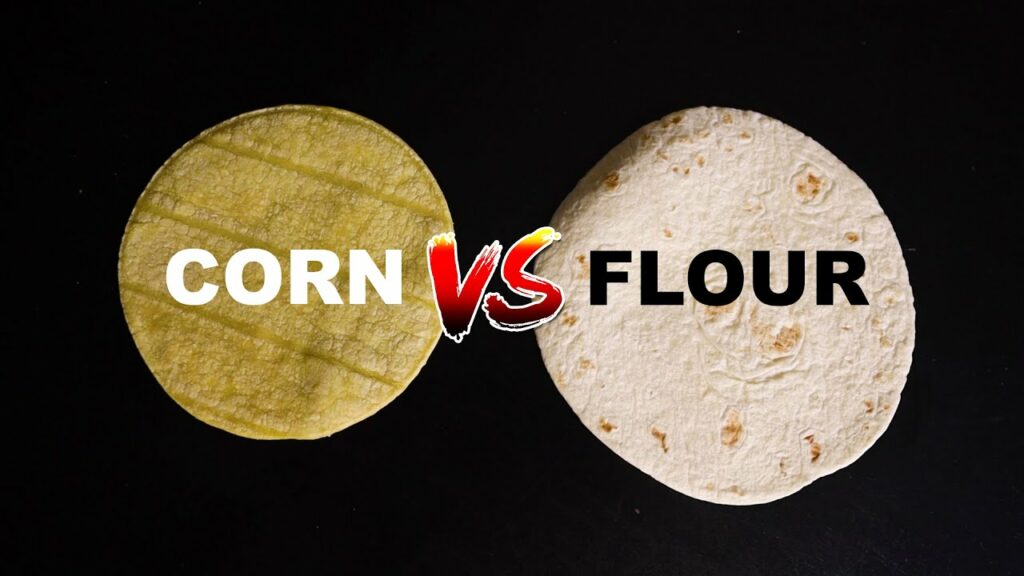Introduction
Tortillas are a staple in many cuisines around the world, particularly in Latin American and Mexican dishes. Among the most popular types are corn and flour tortillas, each offering a unique flavor, texture, and culinary versatility. In this comprehensive guide, we will delve into the differences between corn and flour tortillas, exploring their ingredients, production methods, nutritional profiles, culinary uses, and cultural significance. By the end, you’ll have a deeper understanding of these beloved flatbreads and be better equipped to choose the right one for your culinary creations.
Ingredients and Production Methods
Corn Tortillas
Corn tortillas are made primarily from masa harina, which is a type of corn flour that has been treated with lime (calcium hydroxide) to make it more digestible and nutritious. The masa is mixed with water to form a dough, which is then flattened into thin rounds and cooked on a griddle or comal.
Flour Tortillas
Flour tortillas, on the other hand, are typically made from wheat flour, water, fat (such as lard or vegetable shortening), salt, and sometimes baking powder. The ingredients are mixed together to form a soft, pliable dough, which is rolled out into thin circles and cooked on a griddle or skillet.
Texture and Flavor
Corn Tortillas
Corn tortillas have a slightly coarser texture compared to flour tortillas, with a pronounced corn flavor. They tend to be firmer and more chewy, with a subtle sweetness from the corn.
Flour Tortillas
Flour tortillas are softer and more flexible than corn tortillas, with a neutral flavor that complements a wide range of fillings. They have a smoother texture and may be slightly thicker than corn tortillas.
Nutritional Profile
Corn Tortillas
Corn tortillas are typically lower in calories and fat than flour tortillas. They are also gluten-free, making them suitable for individuals with celiac disease or gluten sensitivity. Corn tortillas are a good source of fiber, protein, and essential nutrients like calcium, iron, and B vitamins.
Flour Tortillas
Flour tortillas tend to be higher in calories and fat due to the added ingredients like fat and sometimes baking powder. They also contain gluten, which may be a concern for those with gluten-related disorders. However, flour tortillas may provide slightly more protein than corn tortillas due to the wheat flour content.
Culinary Uses
Corn Tortillas
Corn tortillas are traditionally used in Mexican cuisine for dishes like tacos, enchiladas, quesadillas, and tamales. They are also a key ingredient in dishes like chilaquiles and migas. Corn tortillas can be served soft or fried for added crispiness.
Flour Tortillas
Flour tortillas are more versatile and can be used in a variety of cuisines beyond Mexican, including Tex-Mex and Southwestern dishes. They are commonly used for burritos, fajitas, wraps, and sandwiches. Flour tortillas can be served warm or toasted.
Cultural Significance
Corn Tortillas
Corn tortillas have a long history in Mesoamerican cultures, dating back thousands of years. They were a dietary staple for indigenous peoples in Mexico and Central America and continue to be an integral part of their culinary heritage. Corn tortillas are deeply rooted in Mexican culture and are celebrated in festivals and rituals.
Flour Tortillas
Flour tortillas are believed to have originated in northern Mexico and were influenced by Spanish colonial settlers who introduced wheat to the region. They have since become popular across the United States and are a symbol of Tex-Mex cuisine. Flour tortillas have adapted to various culinary traditions and are enjoyed by people of diverse backgrounds.
FAQs (Frequently Asked Questions)
Are corn tortillas healthier than flour tortillas?
Corn tortillas are generally lower in calories and fat and are gluten-free, making them a healthier option for individuals with specific dietary needs. However, both types can be part of a balanced diet when consumed in moderation.
Can I substitute corn tortillas for flour tortillas in recipes?
AWhile corn and flour tortillas have different textures and flavors, you can often substitute one for the other in recipes. Keep in mind that the final result may vary slightly in taste and texture.
Are corn tortillas harder to make at home than flour tortillas?
Making corn tortillas at home requires masa harina, which may be less readily available than wheat flour. However, the process is relatively simple and requires minimal ingredients. Flour tortillas may require a bit more skill in handling the dough to achieve the desired texture.
Can corn tortillas be frozen?
Yes, corn tortillas can be frozen for later use. Wrap them tightly in plastic wrap or aluminum foil and place them in a freezer-safe bag or container. Thaw them in the refrigerator before reheating.
Which type of tortilla is more traditional in Mexican cuisine?
Corn tortillas have a longer history in Mexican cuisine and are considered more traditional. They have been a dietary staple for indigenous peoples for thousands of years and remain a fundamental part of Mexican culinary traditions.
Are there any regional variations in tortilla making?
Yes, there are regional variations in both corn and flour tortilla making techniques, ingredients, and flavors. For example, in northern Mexico, flour tortillas are more prevalent, while in southern Mexico, corn tortillas are favored.
- What Are The Risks Of Consuming THC Drinks? - June 2, 2025
- Neck Line Filler Treatment Near Wallington, Surrey - June 2, 2025
- Navigating The Taboo Of Non-Traditional Relationships - June 1, 2025

